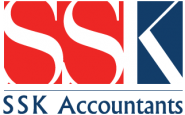There are many ways in which entities can defer income, maximise deductions and take advantage of other tax planning initiatives to manage their taxable income. Taxpayers should be aware that they need to start the year-end tax planning process early in order to maximise these opportunities. Of course, those undertaking tax planning should be aware of the potential application of anti-avoidance provisions. However, if done correctly, tax planning can provide a number of tax savings
- Income received in advance of services being provided is generally not assessable until the services are provided
- Taxpayers who provide professional services may consider, in consultation with their clients, rendering accounts after 30 June in order to defer the income.
- A taxpayer is required to calculate the balancing adjustment amount resulting from the disposal of a depreciating asset. If disposal of an asset will result in assessable income, the taxpayer may consider postponing the disposal to the following income year
- Rollover relief may be available for balancing adjustments arising from an involuntary disposal of assets where replacement assets are acquired.
Maximising deductions
Business taxpayers
- Taxpayers should review all outstanding debts before year-end to identify any debtors who may be unable to pay their bills. Once a taxpayer has done everything in their power to seek repayment of the debt, they may consider writing off the balance as bad debt.
- The entitlement of corporate tax entities to deductions in respect of prior year losses is subject to certain restrictions. An entity needs to satisfy the “continuity of ownership” test before deducting prior year losses. If the continuity of ownership test is failed, the entity may still deduct the loss if it satisfies the same business test.
- A deduction may be available on the disposal of a depreciating asset if a taxpayer stops using it and expects never to use it again. Therefore, asset registers may need to be reviewed for any assets that fit this category.
- Small business entities are entitled to an outright deduction for the taxable purpose proportion of the adjustable value of a depreciating asset, subject to conditions.
A business with an aggregated turnover of less than $2 million using the small business entities
(SBE) depreciation regime can claim an immediate depreciation deduction for assets costing less
than $20,000.00.
Non-business taxpayers
- Non-business taxpayers are entitled to an immediate deduction for assets that are used predominantly to produce assessable income and that cost $300 or less, subject to conditions
- Self-employed and other eligible people are entitled to a deduction for personal superannuation contributions, subject to meeting conditions such as the “10% rule”.
Non-business taxpayers
- Income received in advance of services being provided is generally not assessable until the services are provided
- Taxpayers who provide professional services may consider, in consultation with their clients, rendering accounts after 30 June in order to defer the income.
- A taxpayer is required to calculate the balancing adjustment amount resulting from the disposal of a depreciating asset. If disposal of an asset will result in assessable income, the taxpayer may consider postponing the disposal to the following income year
- Rollover relief may be available for balancing adjustments arising from an involuntary disposal of assets where replacement assets are acquired.
Companies
- Companies should ensure that all dividends paid to shareholders during the relevant franking period (generally the income year) are franked to the same extent to avoid breaching the “benchmark rule”.
- Loans, payments and debts forgiven by private companies to their shareholders and associates may give rise to unfranked dividends that are assessable to the shareholders and their associates. Shareholders and entities should consider repaying loans and making payments on time, or have appropriate loan agreements in place.
- Companies should consider whether they have undertaken eligible research and development (R&D) activities that may be eligible for the R&D tax incentive.
- Companies may consider consolidating before year-end to reduce compliance costs and take advantage of tax opportunities available as a result of the consolidated group being treated as a single entity for tax purposes.
Trusts
- Taxpayers should review trust deeds to determine how trust income is defined. This may have an impact on the trustee’s tax planning
- Trustees should consider whether a family trust election (an FTE) is required to ensure that any losses or bad debts incurred by the trust will be deductible and that franking credits will be available to beneficiaries.
- Taxpayers should avoid retaining income in a trust because it may be taxed in the hands of the trustee at the top marginal tax rate.
Small business entities
- From 2015–2016, the tax rate applicable to small business entities that are companies is 28.5% (rather than the standard 30% rate) and other types of small business entities are entitled to a tax discount in the form of a tax offset
- Small business entities are entitled to an immediate deduction for certain pre-business expenditure incurred after 30 June 2015
- Eligible small business entities can access a range of concessions for a capital gain made on a CGT asset that has been used in a business, provided certain conditions are met.
- An optional rollover has been introduced for the transfer of business assets from one entity to another for small business owners who change the legal structure of their business.
- A CGT “look-through” treatment for eligible earnout arrangements has been introduced.
- From the 2016–2017 FBT year, small business entities will be able to provide more than one work-related portable electronic device to an employee and claim the FBT exemption for each device, even if the devices have substantially identical functions and are not replacement items.
- Taxpayers may consider crystallising any unrealised capital gains and losses to improve their overall tax position for an income year.
Superannuation
- Individuals who wish to take advantage of the concessionally taxed superannuation environment should keep track of their contributions.
- Individuals with salary sacrifice superannuation arrangements may want to have early discussions with their employers to help ensure contributions are allocated to the correct financial year.
- Individuals earning above $300,000 are subject to an additional 15% tax on concessional contributions. However, despite the extra 15% tax, there is still an effective tax concession of 15% (ie the top marginal rate less 30%) on their contributions up to the relevant cap
- Self managed super funds (SMSFs) have been reminded that if they have investments in collectables or personal-use assets that were acquired before 1 July 2011, time is running out to ensure they meet the requirements of the superannuation law for these assets.
Fringe benefits tax
- The rules for individuals claiming car expense deductions have changed. As a result, if employers reimburse expenses relating to an employee’s use of their own car, only two methods are available for calculating the taxable value of this fringe benefit (when employers apply the “otherwise deductible rule”).
- A separate gross-up cap of $5,000 has been introduced for salary sacrificed meal entertainment and entertainment facility leasing expenses for certain employees of not-forprofit organisations. Affected individuals may want to discuss it with their employers.
Individuals
- For the 2015–2016 income year, the general tax-free threshold available to Australian resident taxpayers is $18,200.
- Australians who have student debts and are travelling or living overseas will soon have the same repayment obligations as people who are still living in Australia.
About SSK Accountants
SSK Accountants is a certified Practising Accountants (CPA) and registered tax agent practice located in Dandenong CBD.Our vision is to provide professional services to all the clients be it large or small, in a pleasant and amicable manner.
At SSK Accountants we provide services to Family Businesses, Partnership, Corporates and Individuals.



